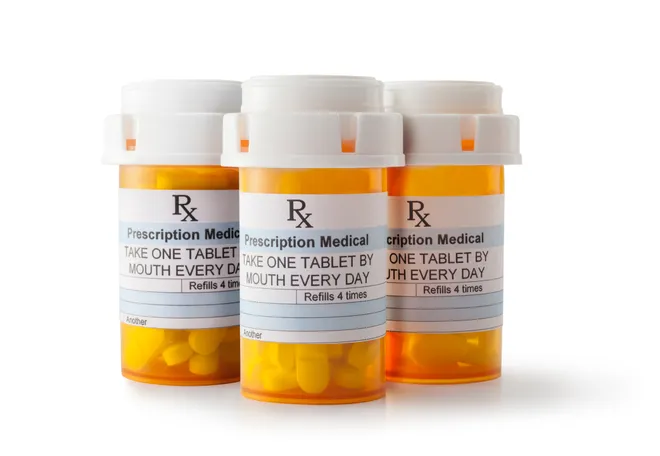Shrinking drug coverage puts Americans in a medical (and monetary) bind
Paying more for less is a recurring theme for Americans these past few years, and it’s even true in health care, a new study shows.
Health insurers are covering fewer drugs, putting more restrictions on their drug coverage, but still raising costs for consumers, prescription drug comparison site GoodRx found after reviewing more than 3,700 Medicare Part D plans from 2010 to 2024.
At a time when Americans are already squeezed by inflation that's soared over the past few years, the cost of staying healthy is becoming more prohibitive. The Centers for Disease Control and Prevention said 9.2 million adults reported not taking medications as prescribed due to cost, employing such strategies as skipping doses, taking less than the prescribed dose, or delaying filling a prescription.
“The high cost of medications can force people to make difficult choices between prioritizing their health and managing other essential expenses,” said Tori Marsh, GoodRx research director.
How are insurance companies increasing costs for Americans?
Insurers are doing a few things that are making medications more expensive for Americans, Marsh said, including:
- Covering 19% fewer medications. In 2010, the average plan covered 73% of prescribed drugs. In 2024, the average plan covered just 54% of prescribed drugs and 25% of Americans have at least one prescription not covered by insurance, leaving consumers to have to pay for the full cost of their medication.
- Restricting more covered drugs. The average number of drugs with restrictions in Part D plans increased by 23%, from 27% of drugs in 2010 to 50% of drugs in 2024. Restrictions include quantity limits, step therapy which requires patients to try a lower-cost drug before accessing a more expensive prescription medication, prior authorization requirements, and refill-too-soon limits.
Patients either “jump through hoops” to get their medications covered, pay for it themselves or delay taking or abandon their medication completely.
If consumers pay, they pay the drug’s cash price, “which is typically unaffordable,” Marsh said. “It’s no wonder many patients end up abandoning their prescriptions.”
Even if insurance helps cover a medication's cost, increasing copays, coinsurance and deductibles can still make the prescription financially out of reach.
Over the last 10 years, the average deductible for a single enrollee almost doubled, to $1,644 from $917, nonprofit researcher KFF said. Additionally, more medications are being classified as high-cost drugs, which means more out-of-pocket costs for patients.
Patients usually pay a flat, inexpensive co-pay for lower cost medications, but a percentage (coinsurance) of a high-cost drug. The more expensive the drug, the more you pay.
According to an American Medical Association survey, 80% of healthcare professionals reported that prior authorizations also lead to patients abandoning treatment because of the hassle and delays in care they can cause.
Outside of insurers, other factors boost costs for Americans
Soaring prescription drug prices and poor access to medication due to supply chain bottlenecks and pharmacy deserts are also pushing up Americans’ out-of-pocket drug spending, Marsh said.
The list price for all prescription medications have jumped 37% since 2014, and consumers are bearing the brunt of that, she said.
At the same time, more than 40 million Americans lack proper access to a pharmacy, and 20% of Americans had an out-of-stock prescription this year.
“Fifty-one million Americans leave prescription medications unfilled every month,” Marsh said.
Is President Biden’s plan to lower prescription drug prices helping?
“Policymakers are taking steps to improve medication access and affordability, but given the complexity of our healthcare system, changes must happen across the industry,” Marsh said. “Collaboration between the many healthcare players is critical for getting people the medication they need at a price they can afford.”
For example, she noted that after the government capped insulin prices at $35, consumers had a hard time getting their medication at that price. Some Medicare plans dropped some insulin coverage.
There’s been progress with drug manufacturers offering patient assistance programs copay cards for brand medications, but insurers have added barriers, Marsh said. “The largest insurance restriction increase happened in 2019, and we’ve continued to see incremental increases every year since,” she said.
More price transparency would also help, she said.
“People agree to tests, labs, and medications without any understanding of the out-of-pocket costs,” she said. “Even when given an insurance estimate upfront, the margin of error can be extreme. This leads to people taking cost-saving measures such as skipping doses or appointments, delaying a prescription refill, or even taking less medication than prescribed. It doesn’t have to be this way.”
Price checker:Medication prices: See what pharmacies pay for common drugs

How can consumers cut their prescription drug costs?
Some tips to lower your prescription drug bill, according to experts, include:
- Shop around at different pharmacies. Studies show online pharmacies, which have lower operating costs and fewer middlemen than brick-and-mortar equivalents, can save you money.
- Ask your doctor if there’s a less expensive medication available.
- Look for coupons from pharmacies, drug manufacturers and sites like GoodRx.
- Make sure your pharmacy is in-network to benefit from lower prices your insurance company may have negotiated.
- Order drugs from Canada or cross the border to Mexico if they live close. But you must do diligent research to make sure you’re purchasing from a reputable and regulated pharmacy.
Medora Lee is a money, markets, and personal finance reporter at USA TODAY. You can reach her at mjlee@usatoday.com and subscribe to our free Daily Money newsletter for personal finance tips and business news every Monday through Friday morning.
Disclaimer: The copyright of this article belongs to the original author. Reposting this article is solely for the purpose of information dissemination and does not constitute any investment advice. If there is any infringement, please contact us immediately. We will make corrections or deletions as necessary. Thank you.







